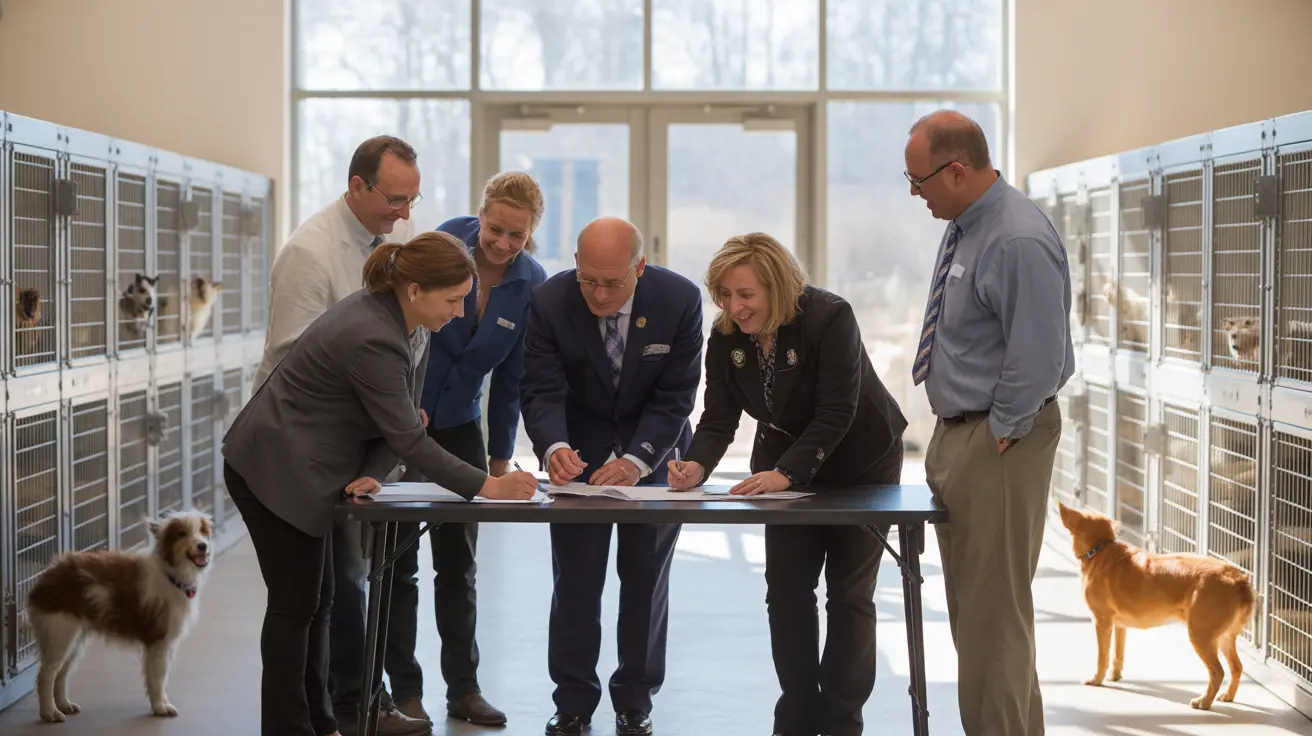Dog Pillows for Comfort and Joint Support: A Complete Guide to Your Pet's Sleep Needs
Many dog owners notice their furry companions gravitating toward pillows, cushions, and soft surfaces throughout the home. While dogs are anatomically different from humans and don't require pillows for spinal alignment, they can significantly benefit from the comfort, support, and emotional security that pillows provide. Understanding why dogs are drawn to pillows and how to choose the right bedding can enhance your pet's quality of life, particularly for senior dogs, small breeds, and those with joint issues.
The relationship between dogs and pillows goes beyond simple comfort preferences. It taps into deep-seated instincts, emotional needs, and physical requirements that vary based on age, breed, and health status. By exploring these factors, pet owners can make informed decisions about whether their dogs would benefit from dedicated pillow bedding and how to select the most appropriate options for their specific needs.
Why Dogs Are Naturally Drawn to Pillows
Dogs exhibit a natural attraction to pillows for several compelling reasons rooted in both instinct and comfort. The primary appeal lies in the softness and warmth that pillows provide, creating an ideal resting surface that's gentler on joints and muscles compared to hard floors. This is particularly beneficial for senior dogs, who experience increased sensitivity in pressure points like hips, elbows, and shoulders.
Beyond physical comfort, dogs are powerfully drawn to pillows that carry their owner's scent. This familiar smell creates a sense of closeness and security, mimicking the protective environment of sleeping close to littermates or pack members. The scent connection explains why many dogs prefer their owner's used pillows over fresh, clean bedding options.
Instinctual Behaviors and Pillow Preferences
Dogs display several instinctual behaviors when interacting with pillows that reflect their wild ancestry. Circling before settling down, burrowing into soft materials, and kneading cushions are all natural nesting behaviors that help dogs create comfortable sleeping areas. These actions also serve as scent-marking behaviors, allowing dogs to spread their own scent on their chosen resting spot.
Some dogs use pillows as elevated vantage points, which satisfies their instinct to monitor their surroundings while resting. This behavior is particularly common in dogs with strong protective instincts who feel more secure when they can observe their environment from a slightly raised position.
The Benefits of Dog Pillows for Comfort and Joint Support
While dogs don't medically require pillows, these accessories can provide substantial benefits for canine health and wellbeing. The most significant advantage is the relief of pressure on joints and muscles, especially for dogs experiencing age-related stiffness or orthopedic issues. Pillows create a cushioned surface that distributes weight more evenly, reducing strain on sensitive areas.
Temperature regulation is another important benefit that pillows provide. Dogs lying on cool floors during hot weather may appreciate the insulation that a pillow offers, while the raised surface allows for better air circulation in warmer conditions. This adaptability helps dogs maintain optimal body temperature throughout different seasons.
Orthopedic Support for Senior and Arthritic Dogs
Senior dogs and those with arthritis or joint issues receive the most significant benefits from supportive pillow bedding. Memory foam and orthopedic pillows can provide crucial neck and spinal support, alleviating pressure on affected joints and improving sleep quality. These specialized pillows conform to the dog's body shape, offering targeted support where it's needed most.
Dogs with hip dysplasia, elbow dysplasia, or other structural issues may find relief through properly designed pillow beds that support proper joint alignment during rest periods. The cushioning effect reduces the impact of settling down and getting up, movements that can be particularly painful for dogs with joint problems.
When Your Dog Would Benefit from a Dedicated Pillow
Certain groups of dogs derive greater benefits from having their own pillows compared to others. Senior dogs top this list, as age-related changes in joint flexibility and muscle mass make comfortable bedding increasingly important for quality rest and pain management.
Small breeds often benefit from pillows due to their higher surface area-to-volume ratio, which makes them more susceptible to temperature fluctuations. The elevation and insulation provided by pillows help these smaller dogs maintain appropriate body temperature and feel more secure in their environment.
Emotional and Behavioral Considerations
Dogs experiencing separation anxiety or stress-related behaviors often find comfort in pillows infused with their owner's scent. This familiar smell can reduce anxiety levels and provide emotional security when owners are away. The pillow becomes a source of comfort that helps anxious dogs cope with challenging situations.
Territorial dogs may also benefit from having their own designated pillow bed, which can reduce conflicts over sleeping spaces and establish clear boundaries within multi-pet households. This arrangement helps maintain harmony while ensuring each dog has a comfortable resting area.
Choosing the Right Dog Pillow: Materials and Features
Selecting appropriate pillows for dogs requires careful consideration of durability, safety, and hygiene factors. The ideal dog pillow should feature machine-washable covers to maintain cleanliness and prevent odor buildup. Hypoallergenic materials are particularly important for dogs with sensitive skin or allergies.
Safety considerations include avoiding pillows with loose threads, buttons, or small parts that could pose choking hazards. Dogs who tend to chew their bedding require more durable materials or alternative bedding options that can withstand their behavior without creating safety risks.
Size and Firmness Considerations
Proper sizing ensures that dogs can stretch out comfortably while still feeling secure in their sleeping space. The pillow should be large enough to accommodate the dog's full body length when lying on their side, with some extra space for movement and repositioning.
Firmness levels should match the dog's specific needs and preferences. While some dogs prefer softer surfaces for maximum comfort, others may benefit from firmer support, particularly those with orthopedic issues requiring stable joint positioning during rest.
Training Your Dog to Use a New Pillow
Successfully introducing a new pillow requires patience and strategic scent familiarization techniques. Placing a piece of the owner's worn clothing on the new pillow helps transfer familiar scents that make the bedding more appealing to the dog. This approach leverages the strong scent-driven preferences that dogs naturally exhibit.
Gradual introduction works better than immediately replacing existing bedding. Start by placing the new pillow near the dog's current sleeping area, allowing them to investigate and become familiar with it at their own pace. Positive reinforcement through treats and praise when the dog shows interest in the pillow can accelerate acceptance.
Creating Positive Associations
Making the pillow a positive space involves more than just scent familiarity. Feeding treats, engaging in gentle petting sessions, or conducting brief training sessions near the pillow helps create positive associations with the new sleeping area. These activities help the dog view the pillow as a rewarding and comfortable space rather than an intrusion on their established routine.
Alternatives to Traditional Dog Pillows
Not all dogs require traditional pillow bedding to achieve optimal comfort and support. Elevated dog beds offer excellent air circulation and cooling benefits, making them ideal for dogs who tend to overheat or prefer cooler sleeping surfaces. These beds also provide joint support while maintaining durability against chewing behaviors.
Orthopedic dog beds with built-in bolsters combine the benefits of elevation with the security that many dogs seek from raised edges. These beds provide comprehensive support while accommodating natural nesting behaviors and the desire for a secure sleeping environment.
Multi-Pet Household Considerations
In homes with multiple pets, individual pillow beds can help reduce territorial conflicts and ensure each dog has access to comfortable resting areas. Maintaining separate bedding also simplifies hygiene management and allows for customization based on each pet's specific needs and preferences.
Washable covers become even more critical in multi-pet environments where cross-contamination and odor management require more frequent cleaning cycles. Durable materials that can withstand regular washing maintain both hygiene standards and long-term cost-effectiveness.
Frequently Asked Questions
- Do all dogs need pillows for proper sleep?
No, dogs do not medically require pillows as humans do. However, many dogs benefit from the comfort, joint support, and emotional security that pillows provide, especially senior dogs, small breeds, and those with joint issues or anxiety.
- Why does my dog prefer my pillow over their own bed?
Dogs are strongly attracted to their owner's scent, which provides emotional security and reinforces pack bonding. Your pillow carries your familiar smell, making it more appealing than a clean, unscented bed.
- What materials should I avoid when choosing a dog pillow?
Avoid pillows with loose threads, buttons, or small decorative elements that could pose choking hazards. Also avoid materials that aren't machine washable or contain allergens if your dog has sensitivities.
- How often should I wash my dog's pillow?
Dog pillows should be washed weekly or bi-weekly, depending on use and your dog's hygiene needs. More frequent washing may be necessary for dogs with skin conditions or in multi-pet households.
- Can puppies use pillows safely?
Puppies can use pillows, but chew-resistant materials are essential since puppies are more likely to destroy bedding. Soft, nest-like bedding is often preferred for warmth, but supervision is important to prevent ingestion of materials.
- Are orthopedic dog pillows worth the investment?
For senior dogs, large breeds prone to joint issues, or dogs already experiencing arthritis, orthopedic pillows can provide significant comfort and support benefits that justify the higher cost.
- How do I know if my dog likes their pillow?
Signs of pillow satisfaction include regular use, circling or kneading behaviors before settling, relaxed sleeping postures, and resistance to leaving the pillow area. Dogs who avoid their pillow or seem restless may need different bedding options.
Conclusion
Dog pillows for comfort and joint support represent more than luxury accessories—they can significantly enhance your pet's quality of life through improved sleep comfort, joint relief, and emotional security. While not medically necessary for all dogs, pillows provide particular benefits for senior dogs, small breeds, and anxious pets who thrive with additional support and familiar scents.
The key to successful pillow selection lies in understanding your dog's individual needs, preferences, and behaviors. By choosing appropriate materials, sizes, and features while implementing proper introduction techniques, you can provide your canine companion with a comfortable resting space that supports both their physical health and emotional wellbeing. Remember that every dog is unique, and observing your pet's response to different bedding options will guide you toward the most suitable choice for their specific requirements.






